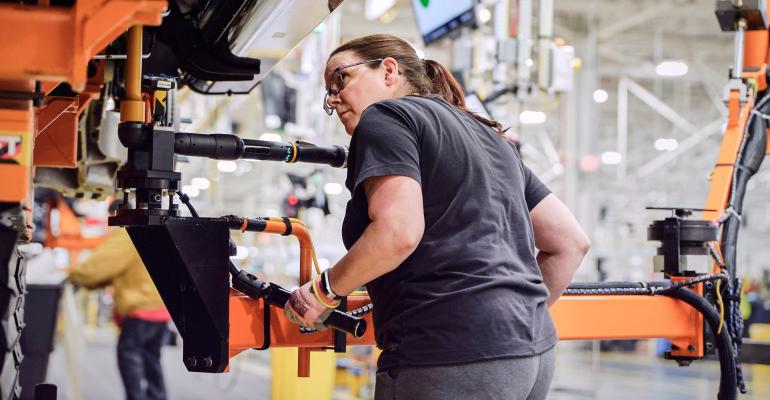Ford is not prepared to say yet what it might do with its stake in EV startup Rivian which left it with a net loss of $3.1 billion in the first quarter of 2022.
“We’re not going to comment on Rivian,” chief financial officer John Lawler says during a conference call with analysts following the release of Ford’s quarterly financial report.
Ford owns roughly 13% of Rivian following an initial investment of $200 million, and it reported a gain of more than $8 billion last year after Rivian’s successful IPO, according to filings with the Securities & Exchange Commission.
Without the Rivian effect, Ford’s adjusted earnings before interest and taxes dropped 41% to $2.3 billion in the first quarter as supply issues cut revenues 5%. The automaker offset a 9% drop in production with higher prices, Lawler says.
The cost of raw materials is twice what Ford anticipated last autumn and is expected to increase by $4 billion in 2022, Lawler says, adding: “We are ramping up efforts to control costs. We don’t believe the pressure is going to ease up anytime soon.”
In addition to higher material costs, Ford was hit with higher-than-expected warranty costs during the first quarter, CEO Jim Farley says.
The effort to get around bottlenecks in the supply chain means the company is spending more money on premium freight.
 Farley (pictured, left) says Ford continues to examine its processes for improving quality and reducing warranty costs, which have been an issue for the company in the past. In addition, Ford is looking at all aspects of its business including marketing, advertising and sales as part of efforts to reduce costs, he says.
Farley (pictured, left) says Ford continues to examine its processes for improving quality and reducing warranty costs, which have been an issue for the company in the past. In addition, Ford is looking at all aspects of its business including marketing, advertising and sales as part of efforts to reduce costs, he says.
The shortages of semiconductors that forced the automaker to scale back operations during the first quarter are beginning to ease, and Ford was able to build more vehicles in March thanks to the improvement in the supply chain, Farley says.
The demand for Ford’s new vehicles is very strong, the CEO adds: “The appeal of these products – Bronco, Bronco Sport, Maverick, Mustang Mach-E, E-Transit and the F-150 Lightning – is undeniable. That’s translating into orders, typically with rich configurations that deliver great experiences to those customers and healthy pricing for us.”
Ford is working to break constraints wherever they exist to get more Ford vehicles, including EVs, to more customers, says Farley. He notes more than 70% of consumers who have ordered the F-150 Lightning are new to Ford, with many of them coming from states such as California and New York where Ford’s market share has shrunk over the years.
Farley also says Ford is closely watching the supply of batteries coming from a plant in Georgia and is sure it has an adequate supply for the near term. Ford is continuing to work on shoring up the battery supply for the medium and longer term, he adds.





